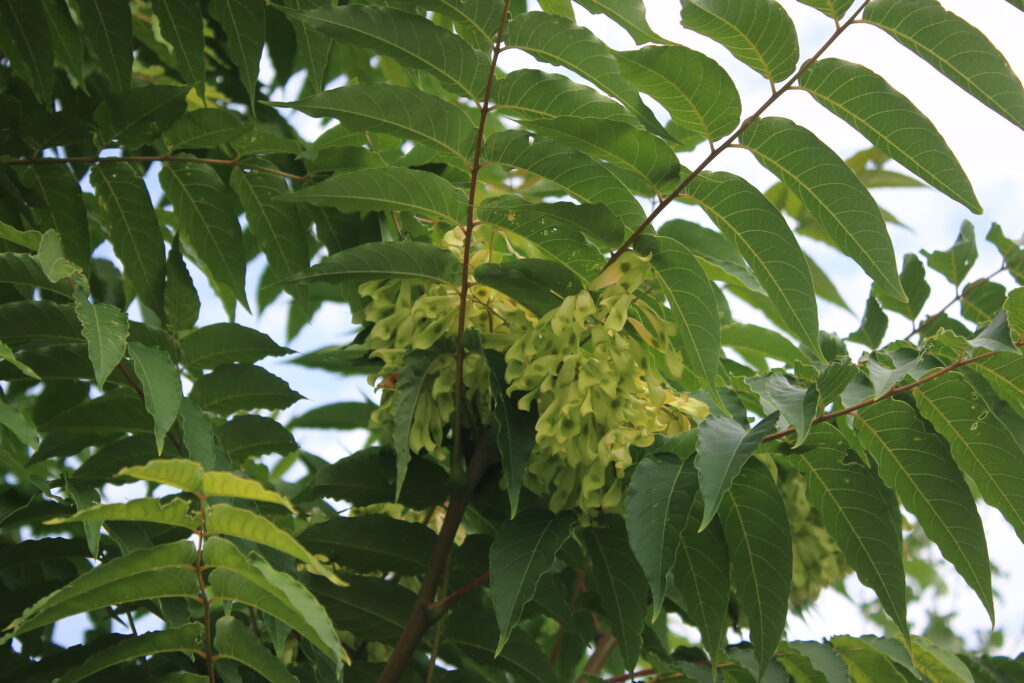
Native to China, Tree of Heaven (Ailanthus altissima) was first introduced to the United States in 1784 as an ornamental and became widely used as a street tree during the 19th century. It is known as one of the most rapidly growing trees in North America. It typically reproduces via wind dispersal of its dry fruits, which have a high germination rate – anywhere its seed lands, in the poorest of soils, with very little water, and even out of cracks in concrete.
In other words, it’s extremely invasive!
Tree of Heaven is also capable of altering soil chemistry to make it unsuitable for other plants to germinate and grow nearby, and it is also an important host species for the spotted lanternfly, as well as the brown marmorated stinkbug, both of which are recently introduced invasives.
Additionally, the sap can cause dermatitis and myocarditis if it enters the bloodstream. It also produces a lot of pollen which can cause allergies, and its leaves, branches, seeds, and bark can irritate the skin.
There are several known plantings of this pesky tree in Kamloops. Please do your part to make sure it (and the spotted lantern fly and stinkbug) doesn’t spread!
How to Identify
- In its juvenile stages it can look like staghorn or smooth sumac, or black walnut. However, when leaves are crushed a foul odor is released – a key identifier.
- Leaves are similarly compound but sumac and walnut have serrated leaves, while tree of heaven is smooth.
- The panicle-shaped yellow-green flowers of sumac develop into fuzzy velvety drupes with vibrant red berries. This invader produces winged samaras (seeds), resembling those of a maple tree. Walnut produces catkins in spring and nuts in the fall.
What You Can Do
- Learn how to identify tree of heaven and other invasive plants, and how to effectively manage these species on your property. There’s lots of additional information online.
- Avoid using this or any invasive plants in gardens and landscaping.
- Buy native or non-invasive plants from reputable garden suppliers.
- See Grow Me Instead: Beautiful Non-Invasive Plants for Your Garden https://bcinvasives.ca/invasives/tree-of-heaven/
- Dispose of invasive plants in the garbage. Do not put them in the compost or discard them in natural areas. Discarded flowers may produce seeds.
